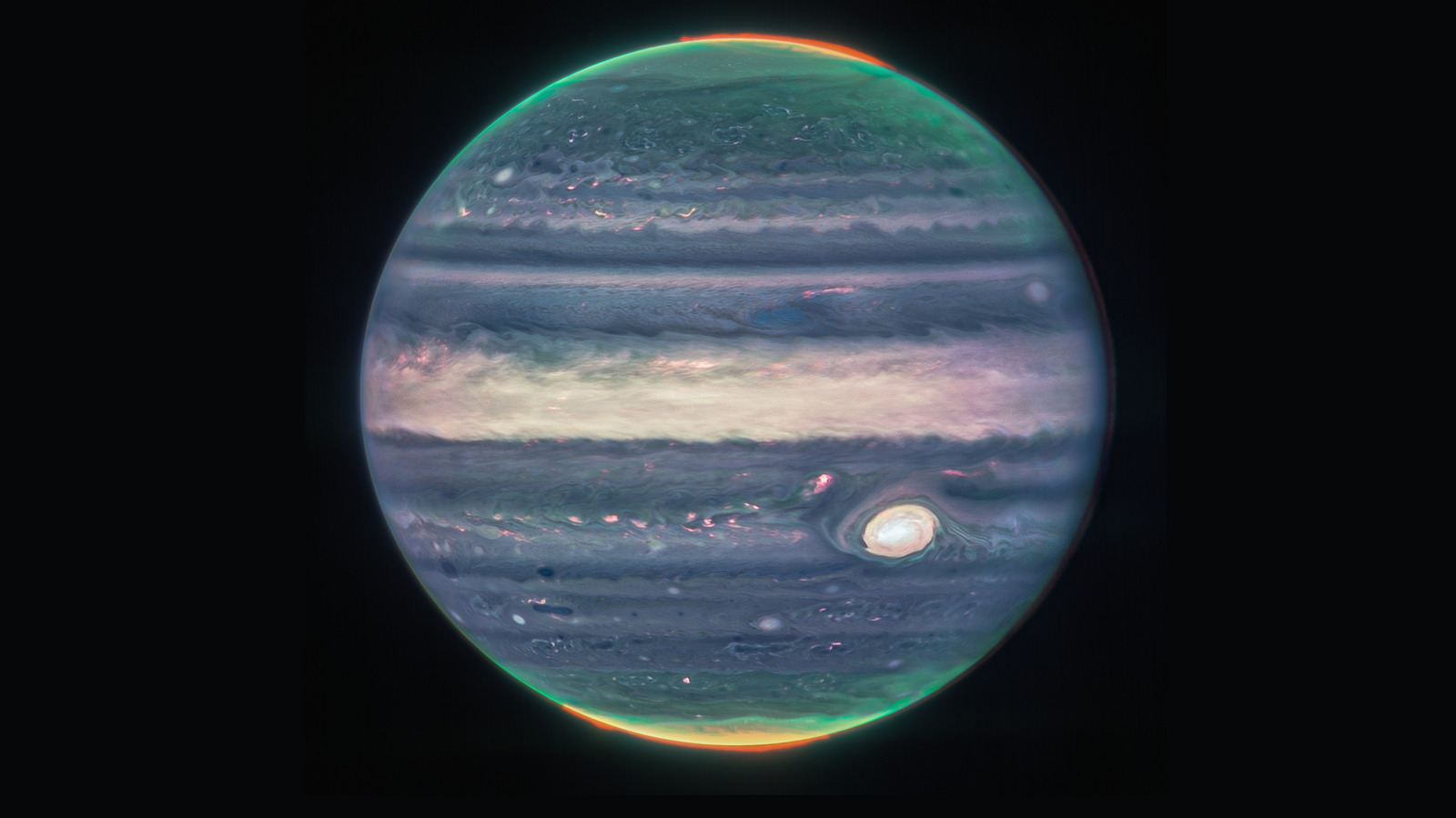James Webb Space Telescope Snaps Incredible Photos Of Jupiter And Its Auroras

To achieve the final result, astronomers had to create composites made out of several images and then add filters to highlight what’s what. The reddish filter is for auroras and the light reflected from the lower clouds on Jupiter; the yellow and green for the south and north poles, and lastly, the blue filter for the light that is being reflected from a deeper main cloud. Both poles have a strong aurora effect. The Great Red Spot, alongside other clouds, appears to be white because of the amount of light that it reflects. The famous Spot is in fact a massive ongoing storm, large enough to encompass the whole Earth.
When shown in a wide-field view, the image of Jupiter reveals more than just the planet itself. We get a glance at its very faint rings, which NASA deems to be a million times fainter than the planet itself. Two of Jupiter’s 79 moons also make an appearance — Amalthea and Adrastea, both tiny and not easy to spot. Below the planet, several white spots can be seen, likely to be distant galaxies.
The end result took a lot of work from several teams, but now, the images are ready to be analyzed. Teams of scientists have already begun their work in order to learn more about Jupiter, a surface-less planet so volatile that a spacecraft will never be able to fly through it.
For all the latest Gaming News Click Here
For the latest news and updates, follow us on Google News.

